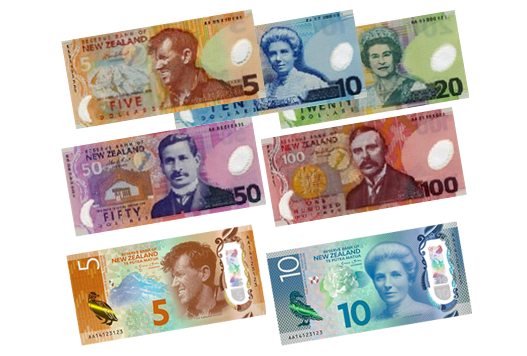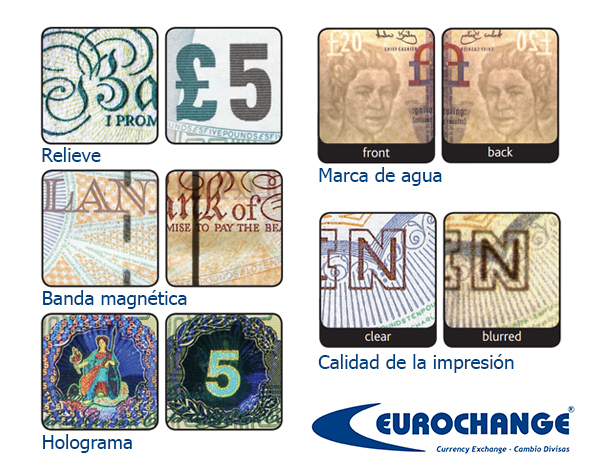New Zealand Dollar information
The New Zealand Dollar is the official currency of New Zealand, the Cook Islands (where it coexists with the Cook Islands Dollar), Niue, Tokelau, and the Pitcairn Islands. Its ISO 4217 code is NZD. Every dollar is divided into 100 cents. Its symbol is $, but often written NZ$ to distinguish it from other dollar denominations. Locally they are also called kiwis because on the 1 dollar coin appears the national bird the kiwi.

History
Until 1967 the legal tender was the British Pound New Zealand. The pound was divided into 20 shillings and each shilling into 12 pence. Since the early twentieth century they were studying the possibility of changing the currency to a simple decimal system which was finally changed in 1967 when the New Zealand Pound was changed to the New Zealand Dollar.
Notes and coins
New Zealand Dollar banknotes that are in circulation are 5, 10, 20, 50 and 100 dollars, all of which are manufactured in polymer. On the front of the banknotes shows images of famous New Zealanders from various fields as well as Queen Elizabeth II (on the $ 20 note). On the back of the notes appear different native birds.
From the October 2015, a new series have been issued to replace the previous notes: Brighter Money. By now just the notes of 5 and 10 Dollars are in circulation that will coexist with the old ones for a while. The other denominations will be issued on April 2016.
The coins are 10, 20 and 50 cents and 1 and 2 dollars. On the website of Reserve Bank of New Zealand you can see how they are: Bank of New Zealand
New Zealand Dollar Rate (NZD)
If you are traveling to New Zealand or any of the territories where the New Zealand Dollar is the official currency, please consult the rate daily updated in our web. This way you'll know which day will be more advantageous to make the change.
You can also make a reservation of New Zealand Dollars and collect them in one of our offices to collect or you can buy them online and receive at your home within 24-72 hours.
Have a good trip!









